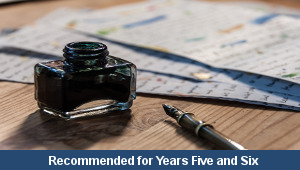Lesson Three – Gears

This science teaching pack for Key Stage Two gets the children to identify, describe and record how a system of gears can be used to direct, transfer and change a range of different movements.
The class can practise using diagrams and write explanations to describe how to solve a problem using a system of gears such as when riding a bicycle or making some clock hands move.
Download this teaching pack including a lesson plan, classroom activities and an interactive presentation to identify, describe and record how a system of gears can be used to direct, transfer and change a range of different movements
Activities in this teaching pack include display posters to identify and describe how the three main types of gears can be used to direct and change movements and a differentiated set of worksheets to test, illustrate and explain how to use gears to change the direction or speed of a movement.
The interactive presentation can be used to explore and record how the three main types of gears can be used to direct and change different movements.
This lesson is part of a science scheme of work to get the children to research, test and illustrate how to use different types of levers, pulleys and gears to change the direction and strength of a range of forces. There are teaching activities for shared learning, differentiated worksheets to support independent learning and interactive presentations to introduce concepts and key skills.
-

Maths Arithmetic Assessment
Assess abilities in solving arithmetic number problems for addition, subtraction, multiplication and division when working with informal and formal written calculations
-

Environment
Identify and describe some of the special landscapes and locations that can be found in the world and reflect on how they can be protected and preserved for the future
-

Silent Letter Words
Explore and illustrate the meanings and spellings of some different words with silent letters when using them in a range of topics and scenarios
-

Complaint Letters
Explain and model how to format and structure writing when composing letters of complaint about different issues and scenarios
